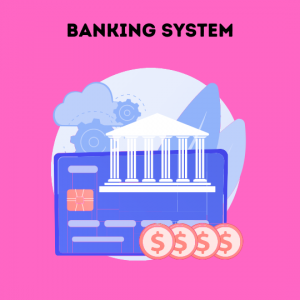Introduction
At the present stage, India is one of the leading world powers. In recent decades, India has been demonstrating sustainable economic growth, influencing the current trends in the world markets for raw materials and finished goods, including in the field of high technologies. India’s personality is that it is a country of contrasts. Large cities and industrial centers live in the age of information technology, and remote places and villages are at the level of the Middle Ages. For a long time, India was only of interest as a country with a rich cultural heritage. Now India is one of the most dynamically developing countries and is the most attractive partner for developed and developing countries, including Russia.

For note, without the IFSC code, it is impossible to identify the bank accounts and transfer the money to the other bank accounts. If you’re looking for the IFSC code then check india post payment bank ifsc code for ipos0000001.
The Indian banking sector is developing rapidly and occupies a worthy place in the global banking community. There are many reasons for this: the economic growth rate was 8%. Bank loans grew by 30% over the year, and there is an unprecedented growth in the middle class from 250 to 300 million people (more than the US population), which needs banking services. All this allows you to get a return of tens of percent on most assets, which is not observed in most countries.
The return on assets of foreign banks in India is about 3%, so their interest in expanding their activities is quite justified: this is much more than the 1% return on average for 1000 leading banks in the world. The Indian market offers a wide range of opportunities not found anywhere else in the world.
Here are some of the possible directions of development:
- The consumer finance market is only 2-3% of GDP against 25% in some European countries, the growth in the Indian real estate market is 30% annually and by 2012 should reach 50 billion US dollars;
- In addition, retail lending is expected to be over 5 “Indian Banking System: The Current State and Road Ahead” Rs.470,000 by 2010 versus the current Rs.189,000 in 2004-15;
- a huge small and medium-sized business sector that makes up a significant part of GDP.
- Furthermore, that the volume of retail loans by 2010 will be more than 5 “Indian Banking System: The Current State and Road Ahead” 4,70,000 crores versus the current 1,89,000 crore as of 2004-15;
- Moreover, a huge small and medium-sized business sector that makes up a significant part of GDP. that the volume of retail loans by 2010 will be more than 5 “Indian Banking System: The Current State and Road Ahead” 4,70,000 crores versus the current 1,89,000 crore as of 2004-15;
- Furthermore, a huge small and medium-sized business sector that makes up a significant part of GDP.
Furthermore, the aim of the course work is to analyze the banking system of India.
research objectives:
- Analysis of the state of monetary circulation;
- Moreover, consideration of the construction of the monetary system;
- Presentation of the structure of the banking system of India;
- Revealing the peculiarities of banking operations in India.
General characteristics of the state
banking India monetary crisis
Characteristics of India
The Republic of India? state in South Asia. India is the seventh-largest in the world in terms of area, the second in terms of population. In addition, India has maritime borders with the Maldives in the southwest, Sri Lanka in the south, and Indonesia in the southeast.
The Constitution of India was adopted by the Constituent Assembly at the end of 1949. In addition, two years after India achieved independence, and came into force on January 26, 1950. And more than that, it is the world’s largest constitution.
In the preamble to the constitution, India is defined as a sovereign, socialist, secular liberal democratic republic with a bicameral parliament. Functioning according to the Westminster parliamentary model.
The head of state is the President of India. Furthermore, who is elected by the electoral college for a term of 5 years by indirect voting. India’s legislature is a bicameral parliament. Moreover, which consists of an upper house called the Rajya Sabha (Council of States) and a lower house called the Lok Sabha (House of the People).
The executive branch consists of the president, the vice president. And the Council of Ministers (the cabinet is its executive committee), headed by the prime minister. Furthermore, India has a unitary three-tiered judiciary, which consists of the Supreme Court. In addition, headed by the Chief Justice of India, the 21st High Court, and a large number of small courts.
In addition, over the past two decades, the average annual GDP growth has been 5.5%. Making the Indian economy one of the fastest-growing in the world. Moreover, does India have the second largest labor force in the world? Moreover, 516.3 million people, 60% of them work in the field of agriculture; 28% in the field of services; and 12% in industry.
Moreover, the main crops are rice, wheat, cotton, jute, tea, sugarcane, and potatoes. The agricultural sector accounts for 28% of GDP; the service sector and industry, respectively, account for 54% and 18%. As a result, major industries include automotive, chemical, cement, consumer electronics, food processing, mechanical engineering, mining, petroleum, pharmaceuticals, metals, and textiles.
Along with the rapid economic growth, the demand for energy resources has greatly increased. According to statistics, India has the sixth-largest oil consumption in the world and the third?

